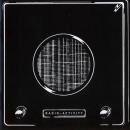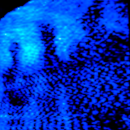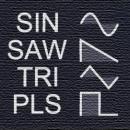He estado dando una vuelta por la página que citas y veo que el tipo de archivos es .EFE. Con este tema voy un poco perdido. De momento solo me se manejar con archivos GKH. Si no lo he entendido mal, los archivos GKH son tipo imagen, y los EFE digamos que son solo un instrumento o sequencia.
A ver si saco algo de tiempo y cacharreo con ese tipo de archivo a ver que sale.
Pego el TXT del programa EPS Disk:
EPSDisk 1.30b User Guidelines (12/14/93)
EPSDisk is a utility program that allows you to read from, write to, or format,
Ensoniq EPS Classic, EPS 16+, and ASR-10 disks using an IBM PC compatible
computer. The data image of an EPS diskette can be saved on a PC hard disk
as a .IMG file or as a .GKH file. ( The latter is just the raw image wrapped in a
format allowing additional information in the file ). In addition, you can transfer
individual files ( such as instruments or sequences ) between the Ensoniq disks and
the PC (stored on the PC hard disk as EFE compatible files).
Other features of EPSDisk include an option that verifies the integrity of
either an Ensoniq disk or a .IMG/.GKH file, and a sector editor that lets you edit
the binary information of the Ensoniq disk or the .IMG/.GKH file.
Installation
Basically, all you need to do to install the program is to create a directory,
and copy the program into it. Before doing this, however, you might give some thought
to where and how you want to store and organize your files, how EPSDisk will be
accessed via your path, and whether or not you want to use compressors.
(Pkzip should compress a GKH file down to about 75% of its original size.)
Using EPSDisk
EPSDisk uses a simple menu interface for executing selected options.
To start the program from the DOS command line, enter: EPSDISK
You see:
EPSDisk v1.30b with SctrEdit module by Michael Chen 3/6/1993
C)opy / F)ormat / disk T)ype / S)ector edit / V)erify / D)irectory /
eX)tract, W)rite file / change P)arameters / Q)uit ?
Important Note: Before doing anything else, always set the disk type (third
menu item) first! If you don't, you may have all sorts of problems.
Following is a breakdown of these menu options:
C) Copy -- This command lets you copy a disk or image file to another disk
or image file. When selected, you see:
Enter source volume spec (<CR> exits):
At this prompt, identify the source data to be copied, either as
i) a floppy drive (e.g., A:)
ii) a GKH filename (e.g., tuba.gkh).
iii) a raw-image filename (e.g., tuba.img).
You then see:
Enter destination volume spec (<CR> exits):
Again, enter a drive or image filename, this time for where you are
copying to. For both prompts, make sure that if a drive is selected,
that drive has an Ensoniq disk whose format matches the one you
selected with the disk type option. For filenames, full pathnames
are legal.
Note: If the disk has never been formatted or uses a different
encoding method (i.e., GCR for DD Mac disks), EPSDisk will figure out
that the disk is new and will format it before copying. If the disk
is MS-DOS, then it needs to be formatted first. (It's easiest just
to always do it.)
F) Format -- This formats a diskette to the type specified by T) Disk Type.
When selected, you see:
Enter volume spec (<CR> exits):
Enter a drive (e.g., A:) at this prompt. You can also enter a IMG/GKH
filename to create a blank file (into which you can copy EFE files).
T) Disk Type -- This option sets the format for both Ensoniq disk and IMG/GKH
files. When selected, you see:
0) User user-defined disk type
1) DD standard EPS double-density (800K)
2) 820K special EPS double-density (820K)
3) HD standard ASR-10 high-density (1600K)
4) 1640K special ASR-10 high-density (1640K)
5) COMP_DD COMPUTER-format double-density (720K)
6) COMP_HD COMPUTER-format high-density (1440K)
7) COMP_800K COMPUTER-format double-density (800K)

COMP_1600K COMPUTER-format high-density (1600K)
Select disk type: (<CR> leaves unchanged)
Enter an option (0 to

. For options 1) through

, make sure that
your selection matches the disk's DD or HD type (i.e., for DD, select
1, 2, 5, or 7; for HD, legal selections are 3, 4, 6, or

. If you
select option 0), you are led through a series of questions concerning
number of tracks, sides, sectors per track, interleaving, gap, sector
offset, head sector shift, and track sector shift (the explanation of
which extends beyond the scope of this document).
Note: The 820K disk doesn't work right on (at least) the EPS Classic,
since the EPS does not seek past track 79.
S) Sector Edit -- This lets you see and/or change the binary data of a disk
or IMG/GKH file, one block per screenload. The editor screen actually
shows the block in two side-by-side matrices--on the left in hex and on
the right in ASCII. A live curser in each matrix allows you to select
and edit bytes in either format. The following operations can be
performed from this screen:
B)lock -- Select the block to view/edit.
R)ead -- Read the last-saved version of the displayed block from file
or floppy (sort of like a "revert").
V)erify -- Verify the current sector.
W)rite -- Write the block to the file or floppy. This writes over
only the block displayed.
H)ex entry -- Edit the selected byte by hex.
A)SCII entry -- Edit the selected byte by ASCII.
Q)uit -- Go back to the main menu.
V) Verify -- This is a check to see whether the Ensoniq disk or GKH file is
readable or corrupted.
D) Directory -- This displays a listing of the individual wave files on
a disk or IMG/GKH file.
Source volume (<CR> exits) :
Enter either a drive or a IMG/GKH filename. You then see:
Directory at block (default 3) :
This is asking you what block's directory to list. If you don't use
subdirectories (and most people don't), just hit return. You should
see something like this example:
2: name DEMO-KIT-ASR type EPS-INST size 1036 (ctg 1) loc 31
3: name VERSA BASS type EPS-INST size 251 (ctg 1) loc 1067
4: name DEMO PERCS type EPS-INST size 363 (ctg 1) loc 1315
5: name DEMO SYNTH type EPS-INST size 377 (ctg 1) loc 1678
6: name DEMO FLUTE type EPS-INST size 109 (ctg 1) loc 2054
7: name DEMO P5-B3 type EPS-INST size 83 (ctg 1) loc 2163
8: name DEMO EFFECTS type EPS-INST size 847 (ctg 1) loc 2246
9: name ASR LEAD GTR type EPS-INST size 34 (ctg 1) loc 3093
10: name TIME BOMB type size 38 (ctg 1) loc 3127
X) Extract -- This option grabs an EPS file (sequence, instrument, etc.) and
reads it into an EFE-format DOS file. The suffixes are different,
to distinguish between sequence and instrument files, etc.
Note: You may have problems getting a good copy if the file's blocks
are not contiguous.
W) Write File -- This selection takes an EFE-format file and writes it onto
the EPS disk. Don't try this with non-EFE files. When selected, you
see a series of prompts:
Destination volume (<CR> exits) :
Enter either a drive or a IMG/GKH filename. You then see:
Directory at block (default 3) :
Enter a <CR> to write the file to the root directory, which is where
you'll probably want your instrument file(s). Next, you see:
Source file name (<CR> exits) :
Enter a filename here, or if you want to copy all the EFE files that
are in the current directory, enter *.EFE.
P) Change Parameters -- This selection sets a number of parameters used in
formatting and any error reporting during a disk/file read. When
selected, you see a series of prompts:
DISK FORMAT PARAMETERS
Label () :
Enter a label name here (or just hit a <CR>). The label name is
written to the disk during formatting.
ERROR HANDLING PARAMETERS
Number of retries on error (5) :
Delay between errors in milliseconds (250) :
Number of drive resets between errors (1) :
Enter <CR> for each of the above three prompts to select the default
values shown in the ()'s. This determines how the program will
behave if it encounters difficulties while reading or varifying a
disk or GKH/IMG file.
Q) Quit -- Exit the EPSDisk program.
Backing up an Ensoniq disk to the PC's hard drive
1. Start EPSDisk.
2. Select T (disk type) and select the format that matches the disk to copy.
3. Insert the Ensoniq disk.
4. Select C to copy.
5. Supply source drive (e.g., A:) and a filename (e.g., organs.gkh).
6. Select V to verify the file you just created.
7. Select Q to exit. You can then use a backup program and/or compression
program to further archive the file, if desired.
Getting a file from the eps mailig lists ftp site to the sampler
1. Using ftp and whatever other modem tools normally used, get the GKH file
to your PC and uncompress it as nessecary.
2. Start EPSDisk.
3. Select T (disk type) and select the format that matches the disk to copy.
(Typically, this step isn't needed, since EPSDisk defaults to standard EPS
800K, and all uploaded GKH files are this type.)
4. Insert the blank disk. This must be a Double sided Double density disk.
5. If the disk is unformatted, select F to format it.
6. Select C to copy.
7. Supply source filename (e.g., organs.gkh) and drive (e.g., A:).
8. Select V to verify the disk you just wrote to.
9. Select Q to exit. Put the disk in your instrument and play.
Copying an EFE file from an 800K GKH file to a 1600K GKH file (of interest to
ASR-10 and TS-10 users)
1. Start EPSDisk
2. Select X to extract.
3. Supply the source volume (file1.gkh), the directory block (usually just
hit <CR>), the EPS source sound file (as named on the EPS disk), and the
destination filename (file.efe).
4. Select T to change disk type and select option 3).
5. If you're creating a new 1600K disk/gkh-file from scratch, select F to
format and supply the GKH filename (file2.gkh).
6. Select W to write the EFE file to the GKH file.
7. Supply the destination volume (file2.gkh), the directory block, and the
source filename (file.efe).
Uploading a file to the eps mailig lists ftp site
1. Put the samples onto a 800 kB Double sided Double density Ensoniq formatted
floppy. This you can all do at your sampler. Use only DD floppies NOT HD
2. Start EPSDisk and put in the DD floppy you made in the drive.
3. Select C to copy
4. Supply source drive (e.g. A: ) and destination file ( e.g. mygongs.gkh )
5 Compress the image with gzip
6 Make a description of your samples in a text file, call it mygongs.gkh
7. Start your ftp program, upload to the eps/incoming directory
give them destination name such as mygongs.gkh.gz an mygongs.txt
8. Write a short note aboat your upload to the site administrator
telling : what is it? to where do you suggest it beeing moved
Other Information
Be sure to read the epsdisk.txt file--it contains tips and registration
information, as well as other useful tidbits.











